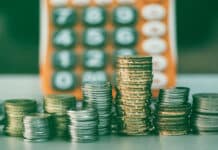
By Magdalena Polan, Principal and Head of Emerging Market Macroeconomic Research, PGIM
The possibility that China’s slowdown, and under-sized fiscal stimulus, might weigh on the world economy continued to worry investors last week. But our analysis reveals that China will continue to be an important driver of world GDP growth this year and next. We expect the Chinese government to focus on boosting domestic demand and, less directly, exports. Other countries will primarily benefit through trade and financial channels. E.g. China’s Asian neighbours, Latin American commodity exporters and Australia, and developed-market exporters of capital goods all stand to benefit significantly from increasing Chinese demand.
Lower inflation or deflation in China may also help global inflation fall over the next four to six quarters, but it will likely not be a decisive factor. Instead, commodity prices, and structural factors such as labor market shifts, the energy transition and supply chain effects including “friend-shoring” are set to matter more.
After the Global Financial Crisis, interest rates remained lower for longer than many investors expected, for various reasons: in the real economy, positive supply shocks included China’s entry into the World Trade Organization, structural labor market shifts, and fiscal retrenchment in the Europe and the U.S. Monetary/financial contributors included the need to recapitalize financial institutions and central bankers’ need to boost inflation to 2%, even under full employment. For much of this period, investors consistently–and mistakenly–projected that short-term rates would rise. Nowadays, many investors expect the current, post-Covid high interest rates to fall. Instead, there are reasons to expect that current, higher interest rates may remain high for longer than investors expect, for multiple reasons.
But doesn’t an inverted yield curve signal a looming recession?
Not necessarily. For example, the U.S. rate hike cycles of 1994 and 2015 ended with so-called “soft landing.” In our analysis, inverted yield curves don’t cause recessions, but the hidden excesses such as excessive lending that they uncover cause recessions. In the absence of such excesses, we see increased likelihood for a “soft landing” in the U.S. economy. We attribute the current yield curve inversion to bond investors’ conviction that we are near the temporary peak in short-term interest rates.

































